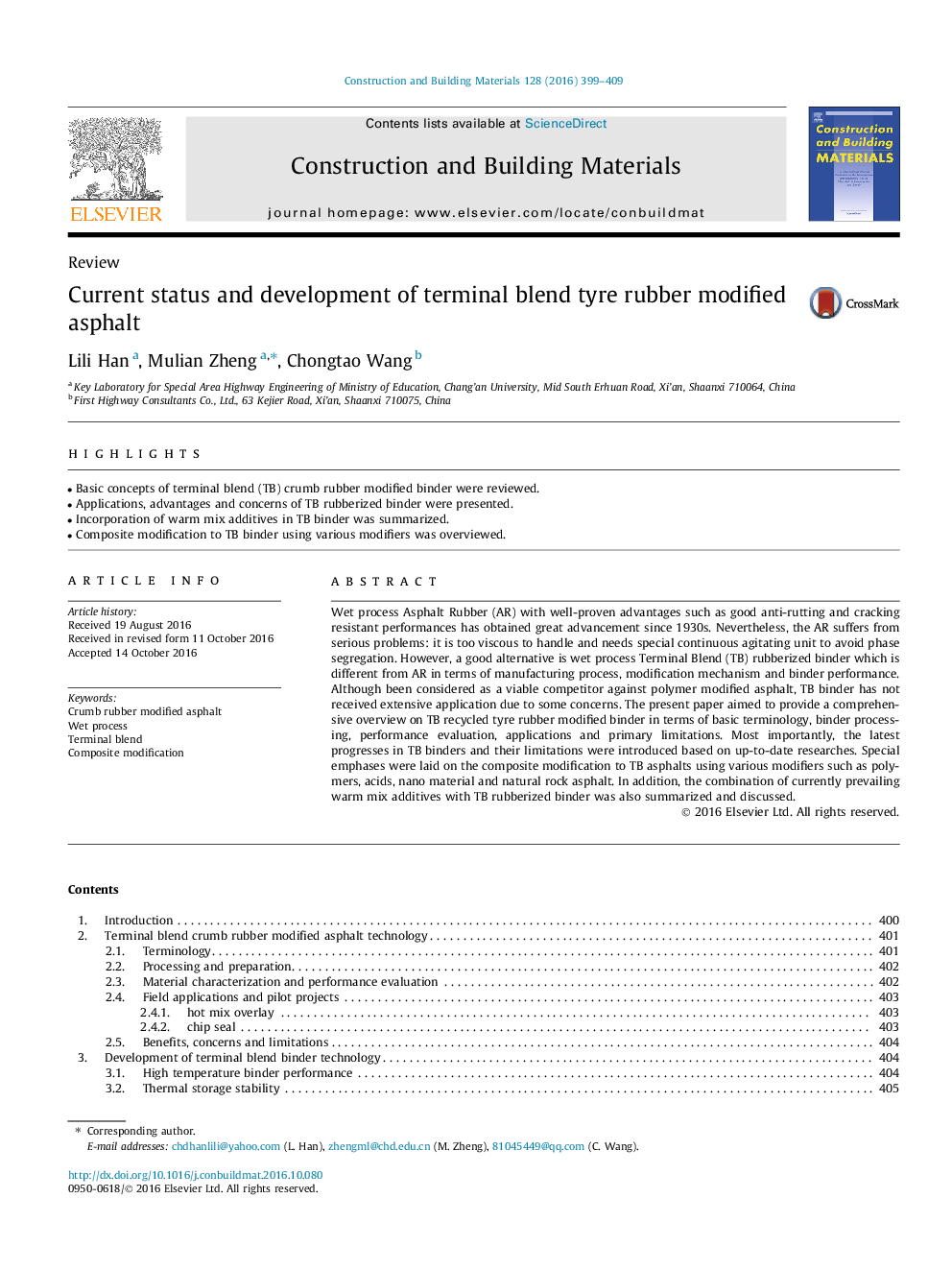| Article ID | Journal | Published Year | Pages | File Type |
|---|---|---|---|---|
| 4914015 | Construction and Building Materials | 2016 | 11 Pages |
Abstract
Wet process Asphalt Rubber (AR) with well-proven advantages such as good anti-rutting and cracking resistant performances has obtained great advancement since 1930s. Nevertheless, the AR suffers from serious problems: it is too viscous to handle and needs special continuous agitating unit to avoid phase segregation. However, a good alternative is wet process Terminal Blend (TB) rubberized binder which is different from AR in terms of manufacturing process, modification mechanism and binder performance. Although been considered as a viable competitor against polymer modified asphalt, TB binder has not received extensive application due to some concerns. The present paper aimed to provide a comprehensive overview on TB recycled tyre rubber modified binder in terms of basic terminology, binder processing, performance evaluation, applications and primary limitations. Most importantly, the latest progresses in TB binders and their limitations were introduced based on up-to-date researches. Special emphases were laid on the composite modification to TB asphalts using various modifiers such as polymers, acids, nano material and natural rock asphalt. In addition, the combination of currently prevailing warm mix additives with TB rubberized binder was also summarized and discussed.
Related Topics
Physical Sciences and Engineering
Engineering
Civil and Structural Engineering
Authors
Lili Han, Mulian Zheng, Chongtao Wang,
